Panasonic Lumix GX85 Review:
There are plenty of compact cameras out there but if you’re looking for something decent for under $800, the choices shrinks considerably. But there are still some really good ones. Take for instance, the new Panasonic Lumix GX85. It comes in at $797.99, and promises not just a ton of features but also features found in more expensive cameras. To top that off, Panasonic has also included a zoom lens for that price. So, how good is the GX85 really? Well, I had this on loan for a while, and here is what I think of it.
Panasonic Lumix GX85 Build Quality:
To me, the GX85 isn’t one of the most attractive cameras out, especially when you consider some of its competition. I’m kind of a surprised that Panasonic didn’t jazz up the design a bit when you consider there are some really great looking cameras out there these days like the beautiful Olympus Pen-F or one of it’s competitors, the retro-themed Fuji X-T10. However, the GX85 is still assembled very well. In the US, it comes in two colors right now, which are black and silver. It’s body is made mostly from plastic but the camera still feels very solid. I had it for a good while for my review, and it was quite durable. When I returned it, there wasn’t even a mark on it.

↑ The ultra compact Panasonic Lumix GX85 with the 12-32mm kit lens.
All the dials and buttons are also very good for the most part. The dials have a nice, sturdy feel to them, which translated into pretty much no accidental settings at all. For instance, the mode dial never moved accidentally. In the past, I used the OM-D E-M5, and to me, the shutter button was like a hair trigger. In contrast, the shutter button on the GX85 offers just the right amount of resistance for me. If anything, some of the buttons on the back are kind of small but other than that, the camera feels great ergonomically.
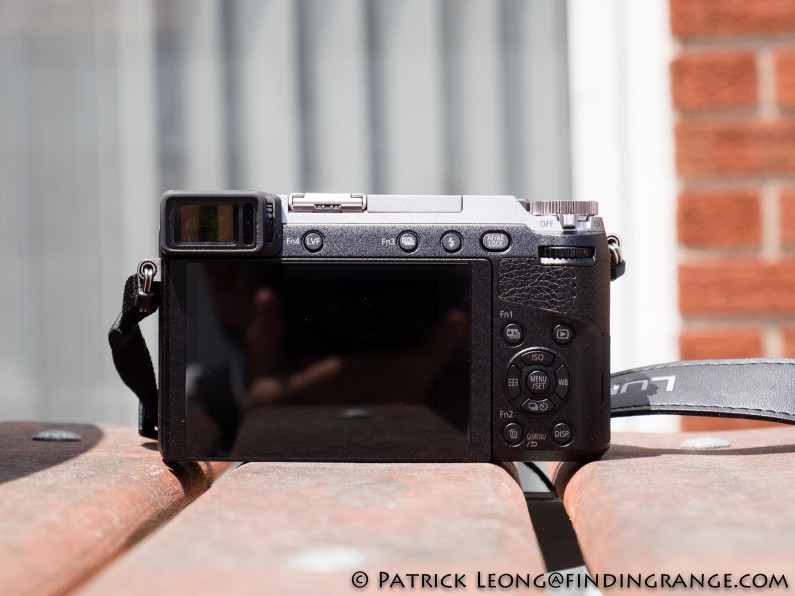
↑ The back is pretty straighforward.
In fact, this is one of the most comfortable cameras that I’ve held in a long time. At 426g with battery and memory card, the GX85 is definitely light enough to be carried around all day but there is still a nice heft to it, which makes it easier to stabilize the camera. Whereas some cameras may need a hand grip or a thumb rest to further stabilize them, I feel like the GX 85 is just about perfect the way it is; I never felt like I was squeezing it too hard or anything just to get a better grip. Plus, while it is very compact, it never feels like it’s so compact that it becomes difficult to operate.
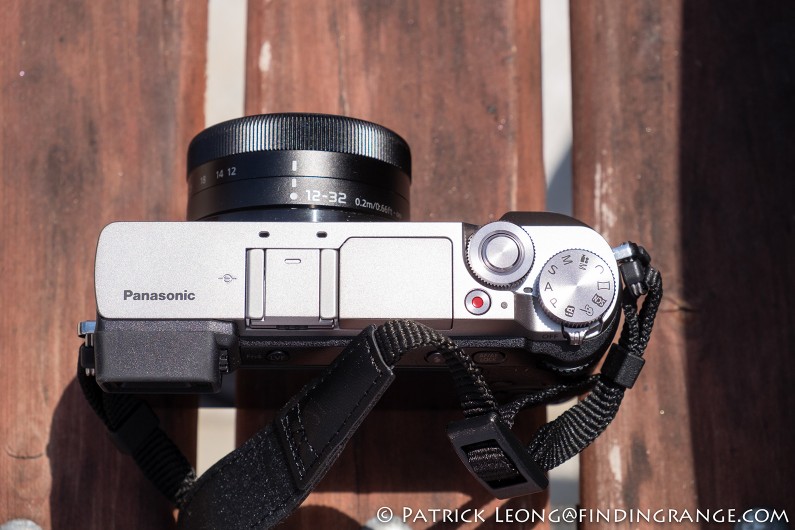
↑ Here is the top plate; it’s a nice, simple, and straightforward design, and as you can see, there is a pop up flash right next to the hot shoe.
Panasonic Lumix GX85 Features:
What’s really amazing about the Panasonic Lumix GX85 is the ton of features you get, especially for the asking price of $797.99, which also includes a decent zoom lens by the way. For instance, the GX85 comes with a 2764k-dot electronic viewfinder, which is actually a higher resolution EVF than some more significantly expensive cameras like the Fuji X-Pro2. The EVF is clear, sharp, has nice contrast, and is very responsive even in dim lighting. It didn’t even have much of an issue in harsh lighting. It would be nicer if the automatic viewfinder monitor activation reacted a bit faster when I bring the EVF to my eye but overall, it’s a pleasure to use. Truthfully, I still prefer an OVF but these electronic viewfinders are getting so darn good these days that I don’t miss my OVF quite as much as I used too.
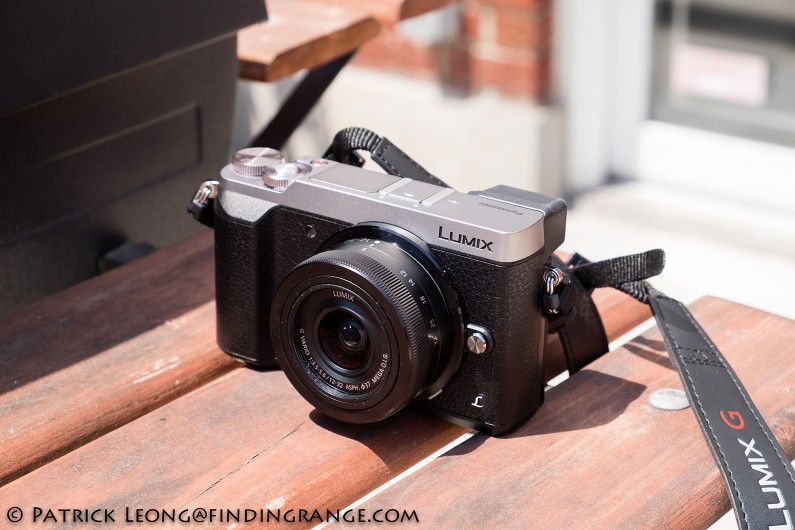
↑ The body is quite comfortable to hold.
In addition, the GX85 also comes with a touch enabled 3″ (1,040,000) Tilting LCD Display Screen. The touch screen is really one of the nicest features of this camera. As with any touch screen, you have the standard features like drag, and pinch (to zoom in and out). You can pick a focus point with your finger, focus, and shoot an image. But you can also pick a focus point on the LCD screen while you are looking through the EVF, which is extremely helpful. Of course, if you don’t like any of the touch capabilities, you can always turn it off. To make shooting even easier, the tilting display provides 80 degrees of up-tilt and 45 degrees of down-tilt. I love how well the screen fits back into place. It’s almost seamless.

↑ The GX85 has a tilting LCD screen.
If the excellent EVF and touch screen aren’t enough, then maybe we need to talk a bit about the shutter system. The Panasonic Lumix GX85 employs a mechanical shutter with a top speed of 1/400os, and an electronic shutter with a top speed of 1/16000s. In terms of the mechanical shutter, a new electromagnetic drive in the shutter unit is designed to help reduce the shock that is usually caused by the movement of the shutter diagragm. This results in reducing the shutter sound, and lowers vibration. It works too; it’s very quiet and you barely feel a thing. Of course, if you choose to shoot with the electronic shutter, you get silent operation and practically no vibration.
The truth is though, vibration isn’t as much of a worry anymore considering how fantastic the Dual Image Stabilization is in the Panasonic Lumix GX85. The GX85 has a 5-axis in-body sensor stabilizer that works together with O.I.S (Optical Image Stabilizer) in lenses in either video or capture modes. You’d be amazed at how low of a shutter speed you can use, and still get a sharp image hand held.
In addition to the image stabilization, the GX85’s autofocus is really up there with some of the best in the mirrorless class. There are several modes to choose from like Face/Eye Detection, Tracking, 49-Area, Custom Multi, 1-Area, and Pin Point. While it is only a contrast AF System, it features Panasonic’s DFD (Depth From Defocus) Technology, which helps boost speed and accuracy. The result is an autofocus system that is blazingly fast. When you combine the speed and accuracy of the autofocus with the low vibration shutter, and incredible image stabilization, you get something that is pretty amazing; you can literally walk without stopping, and shoot at the same time. I did this purely for experimental purposes, and I was actually able to still get sharp images!
If the features I’ve just mentioned still don’t impress you yet, well then how about the fact that the GX85 can record 4K video. The GX85 records high resolution 4K video in 3840 x 2160 at 30p or 24p in addition to the full-HD 1,920 x 1,080 60p videos. Furthermore, you can save 8 megapixel stills from 4K. Then there’s Post Focus, which I think is one of the coolest features of this camera. It let’s you select an in-focus area after shooting. The GX85 performs burst recording in the same picture quality as 4K photo recording, and it automatically shifts the focus to different areas. This allows you to selected what area you want to be in focus, and then save as a photo. To top off this list of features, the GX85 even has a pop up flash kind of like the cherry on top of a ice cream sundae. This list of features is pretty amazing if you consider the price of the Panasonic Lumix GX85, and the fact that it is also so compact.
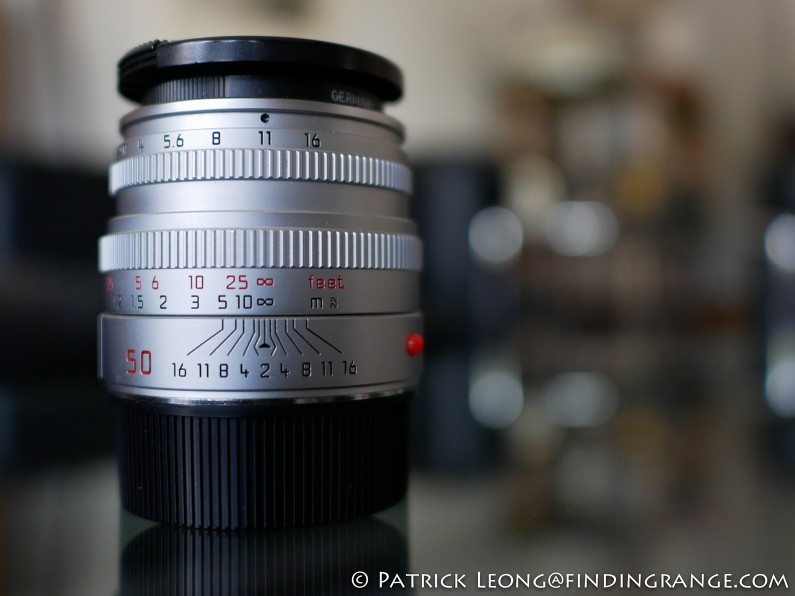
↑ As you can see, here is a photo where the 50 Summicron lens is in focus.
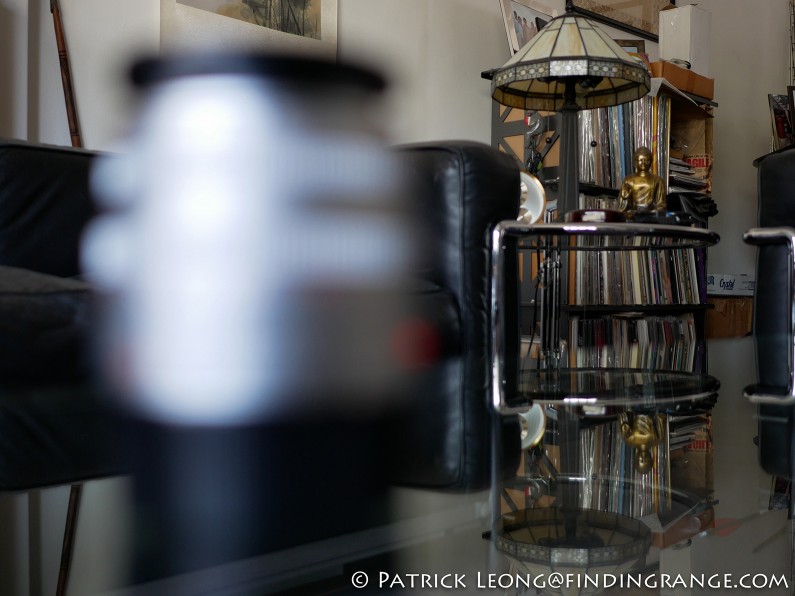
↑ This photo has the background in focus.
You really are getting a lot of camera for the buck. Some of its features are even found in higher end models like the Olympus Pen-F (which I reviewed recently), which is currently my favorite micro four thirds camera. Sure, the Pen-F is absolutely beautiful, and there’s no doubt in my mind that it’s built like a tank with better materials. To me, the Pen-F is one of those digital cameras that really feel like a film camera from the 1950s. It also has some of its own great features like the High Res. Shot mode, and the 20mp sensor. But I don’t feel like you would be losing significantly more by choosing the GX85 over the Pen-F if you wanted to save a little cash. In other words, the GX85 will get you pretty far in photography. In fact, if you’re new to micro four thirds, it might actually work out better because you could use the extra cash for another decent lens.
Panasonic Lumix GX85 Image Quality:
Now, it’s great to have so many features but the Panasonic Lumix GX85 is still a camera, which means image quality is definitely important. Well, the 16 megapixel Live MOS Sensor definitely delivers the goods. Images have decent contrast and color reproduction is excellent. Images also have that extra bit of sharpness and bite thanks the lack of a Low Pass filter. In fact, according to Panasonic, there is a nearly 10% increase in resolving power when compared to previous 16 megapixel sensors thanks to the elimination of the low pass filter. As for the sensor only having 16mp, some may argue that it isn’t enough. Of course, I definitely like high megapixel cameras, and I’m not afraid to say it but at the same time, I also know that you don’t always need ultra high megapixels to create beautiful images. Having the 20mp sensor from the Panasonic Lumix GX8 would’ve been nice, there’s no doubt about that; however, I would have no problems making big prints from GX85’s sensor. It still does a fantastic job creating beautiful photographs.
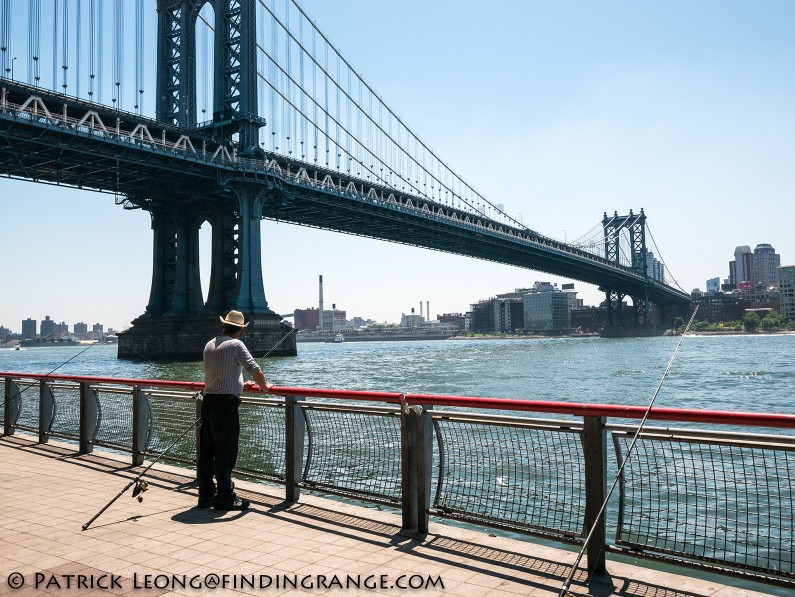
↑ This GX85 really gets you in the door to the micro four thirds world for a very reasonable price considering its features. It allows you to save up for nice lenses like the 15mm Summilux, which is what I am using here. This was taken at f8 1/2500s using 800 ISO.
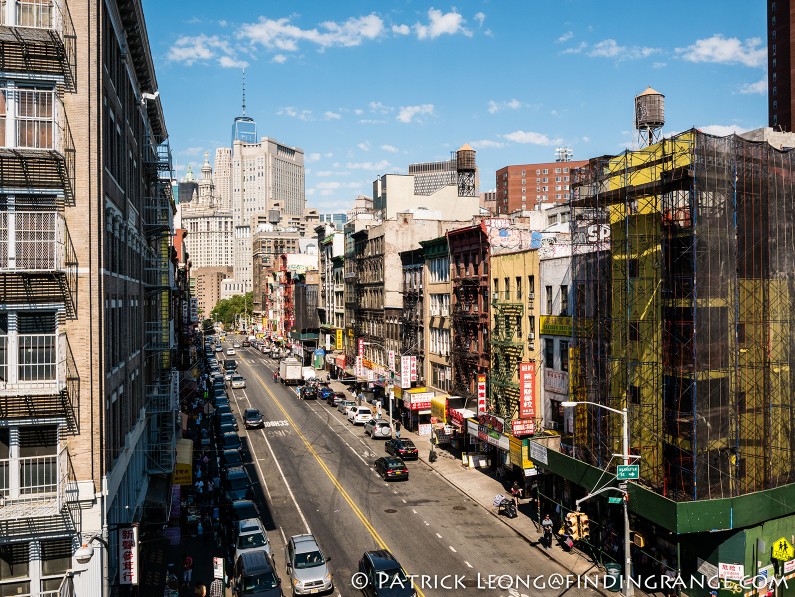
↑ This was taken at f8 1/400s using 200 ISO with the Panasonic 15mm Summilux.

↑ This was taking at f4 1/1250s using 800 ISO with the 15mm Summilux.
↑ This was taken with the 25mm Summilux f1.4. 1600 ISO f4 1/800s.
Now, I shoot mainly raw format but if you’re not into editing or post-processing your photos, You can still get great photos. There are plenty of filter effects to choose from: Expressive, Retro, Old Days, High Key, Low Key, Sepia, Monochrome, Dynamic Monochrome, Rough Monochrome, Silky Monochrome, Impressive Art, High Dynamic, Cross Process, Toy Effect, Toy Pop, Bleach Bypass, Miniature Effect, Soft Focus, Fantasy, Star Filter, One Point Color, and Sunshine.
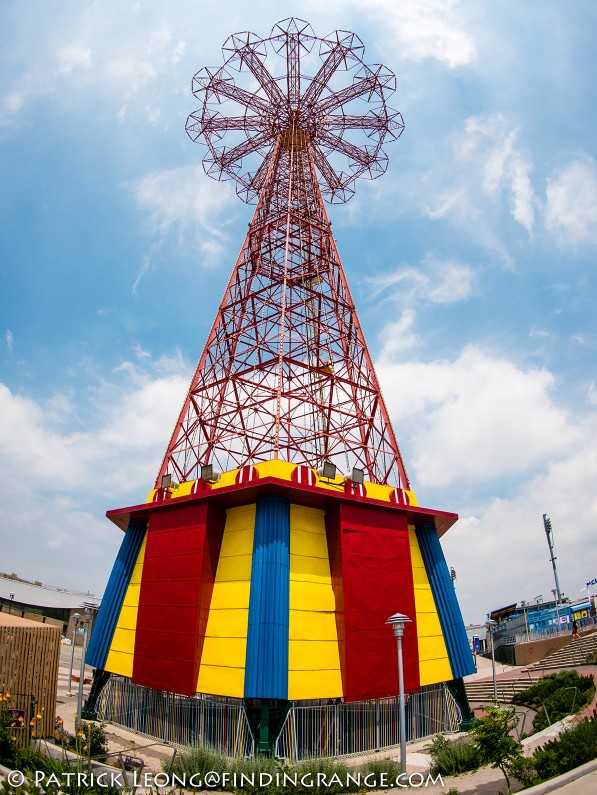
↑ The 9mm fisheye lens cap lens is one of my favorite micro four thirds lenses. It’s compact, and a real bang for the buck.

↑ This was taken with the 12-32mm kit zoom at 32mm. 200 ISO f5.6 1/100s.

↑ This was taken with the 12-32mm at 12mm. 1/640s f8 200 ISO.
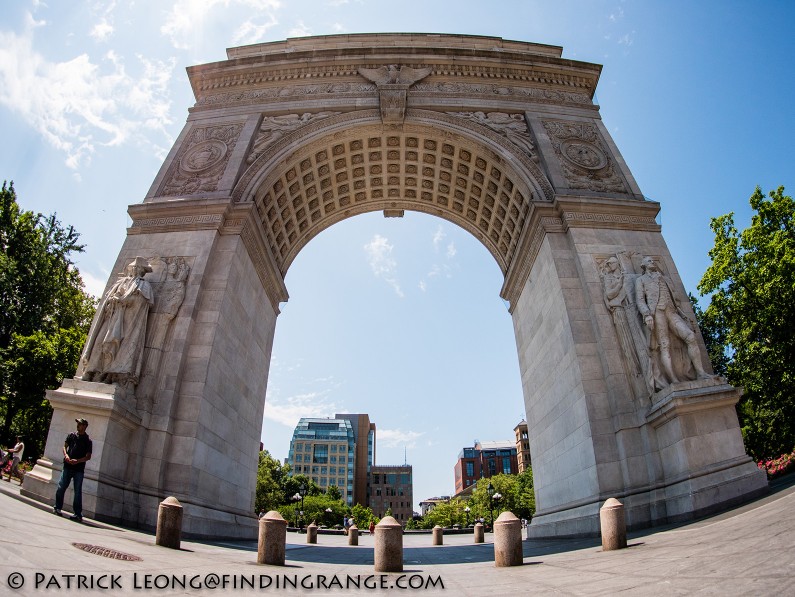
↑ I just love using the 9mm fisheye lens cap lens. It’s about $84, and it’s so fun to use.
The great news about the image quality is that the high ISO is also excellent. The GX85’s ISO range is 200-25,600. It can also go down to 100 ISO in extended mode. For the most part, I saw clean images even up to 3200 ISO. At 6400 ISO, noise does start creeping in a bit with some desaturation but overall, it’s still good and perfectly useable. Once you reach 12,800 ISO noise creeps in more, and at 25,600 ISO, it gets a lot noisier, especially if you’re not careful with your metering. But again, at 25,600, the photos are still useable, and let’s be real; there are times when ultra high ISO is needed maybe for extreme sports where you need high shutter speeds but for what this camera is designed for, I can’t see many pushing it up to its max ISO, especially when there are plenty of fast lenses to choose from, and the dual image stabilization.

↑ As you can see, 1600 ISO is great. This was taken with the 15mm Summilux at f2.8.
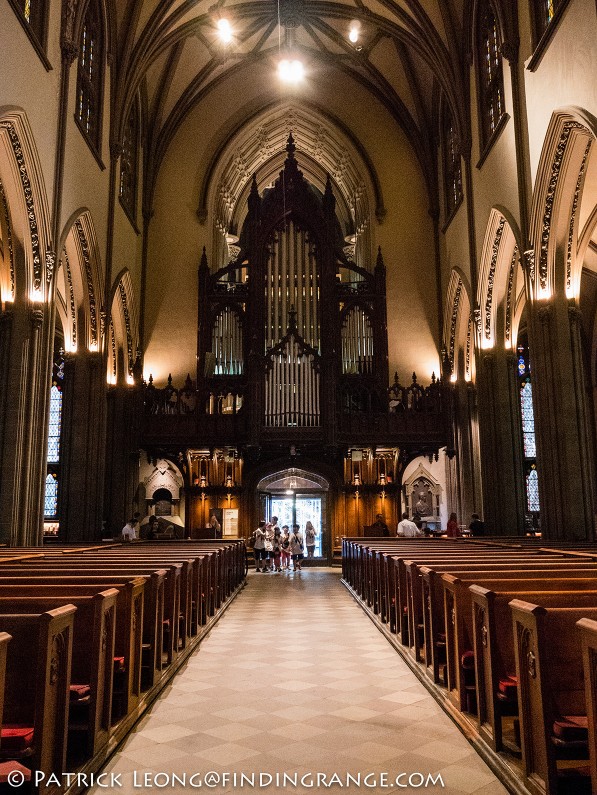
↑ This was taken using 12,800 ISO with the 15mm Summilux.
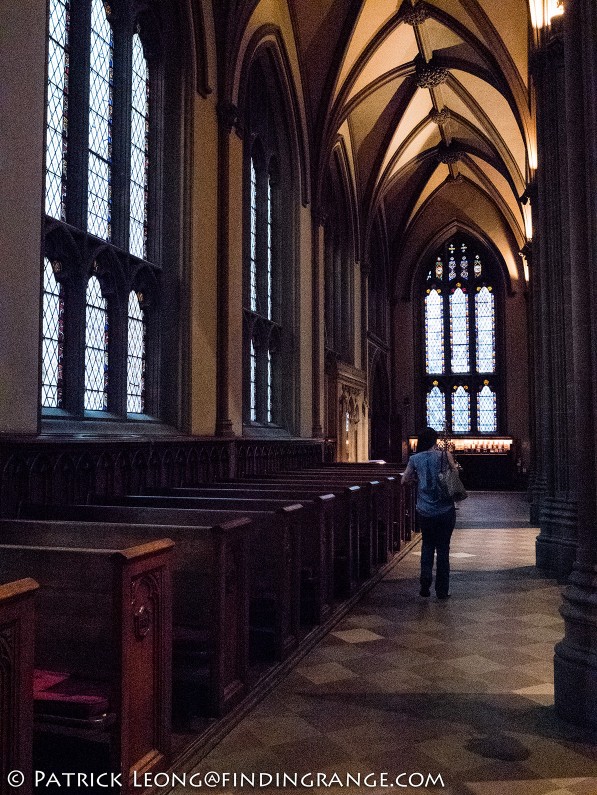
↑ Here’s a photo taken at 25,600 ISO with the 15mm Summilux.
Lastly, the 12-32mm that comes with the Panasonic Lumix GX85 is actually a pretty good optic. First off, it’s very compact, so it matches the camera perfectly. Second, the lens takes great images. There are the usual imperfections when you shoot wide open with it like slightly soft corners and slight vignetting but once you stop it down a bit, a lot of those imperfections clear up. Plus, it’s a sharp lens. So, if this is your first micro four thirds camera, and you’re not ready to buy another lens, at least you know that you’ll still have a decent lens to use until you’re ready to purchase another optic.
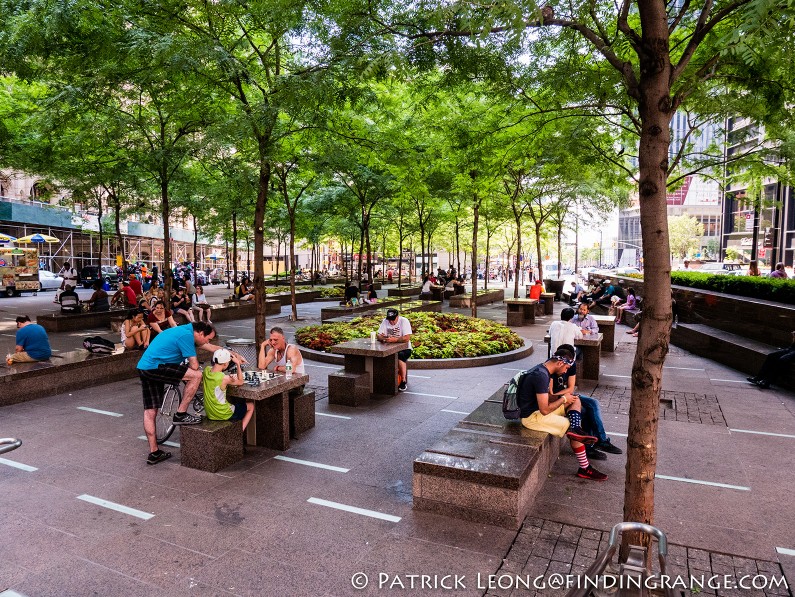
↑ The kit zoom is actually a decent lens. 1600 ISO f5.6 1/250s.

↑ This was taken using the kit lens at 12mm. 1/800s f8 200 ISO.
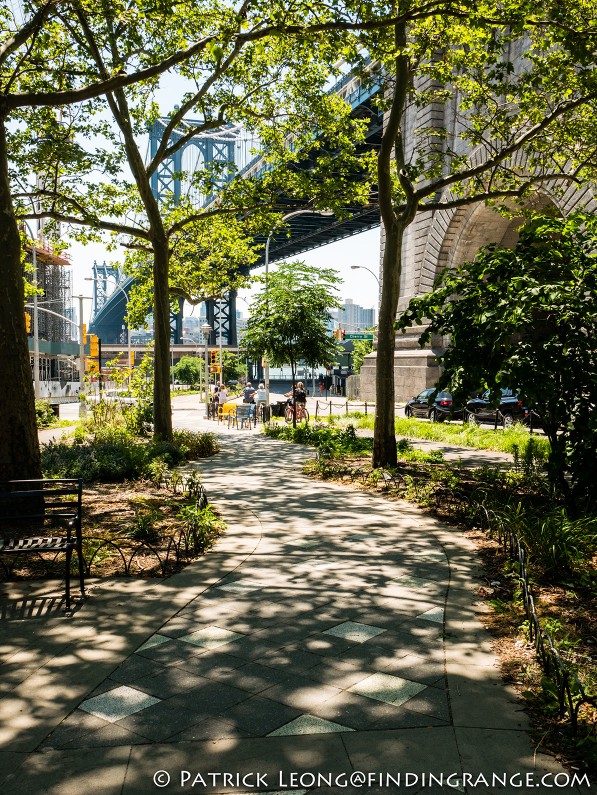
↑ 200 ISO f11 1/100s using the kit zoom at 16mm.
↑ 200 ISO f11 1/320s using the kit lens at its widest focal length of 12mm.
Panasonic Lumix GX85 Pros and Cons:
Panasonic Lumix GX85 Pros:
- Well-built.
- Comfortable to hold.
- Compact and light.
- Excellent EVF.
- Tilting LCD touch screen.
- Mechanical and electronic shutter.
- Dual image stabilization.
- Excellent autofocus system.
- 4K capabilities with the ability to retrieve stills from it.
- Excellent image quality
- No low pass filter for that extra bite in images.
- Excellent ISO capabilities.
- For the price, it also includes a decent zoom lens to get you started.
- A hugely diverse lens choice in the micro four thirds world.
- Overall, you are getting a TON of features for the price. It’s great that the size of the camera is so compact as well.
Panasonic Lumix GX85 Cons:
- The camera isn’t ugly but it’s kind of boring looking.
- While it’s well-built, the GX85 is made mostly from plastic.
- I don’t like the location of the tripod mount.
Panasonic Lumix GX85 Verdict:
Overall, the Panasonic Lumix GX85 is one impressive camera. It’s price and tons of features make the GX85 a perfect choice for a broad range of photographers. The GX85 is an excellent choice whether you’re looking for something for the street and need to be low key or you just need to supplement an existing system. It’s also great for someone who wants to start taking photography more seriously. With so many features, an amateur or someone more advanced can grow with this camera. Even if you don’t own any micro four thirds lenses, it doesn’t matter because Panasonic has thrown in a decent zoom lens with the GX85 just to get you started. Are there issues? Yes but to me, for what this camera is designed for, the features it has, and the price, those issues are quite small. This camera really packs quite a punch, it’s ultra compact, fast, and versatile. It does all of this without breaking the bank, which makes the GX85 really hard to beat in its category.
Thanks for taking the time to read my review! If you’re considering purchasing the GX85, and my review helped you decide, please help support this site by purchasing from the links below or any mentioned in this review. It will not cost you anything extra. Thank you for your support!

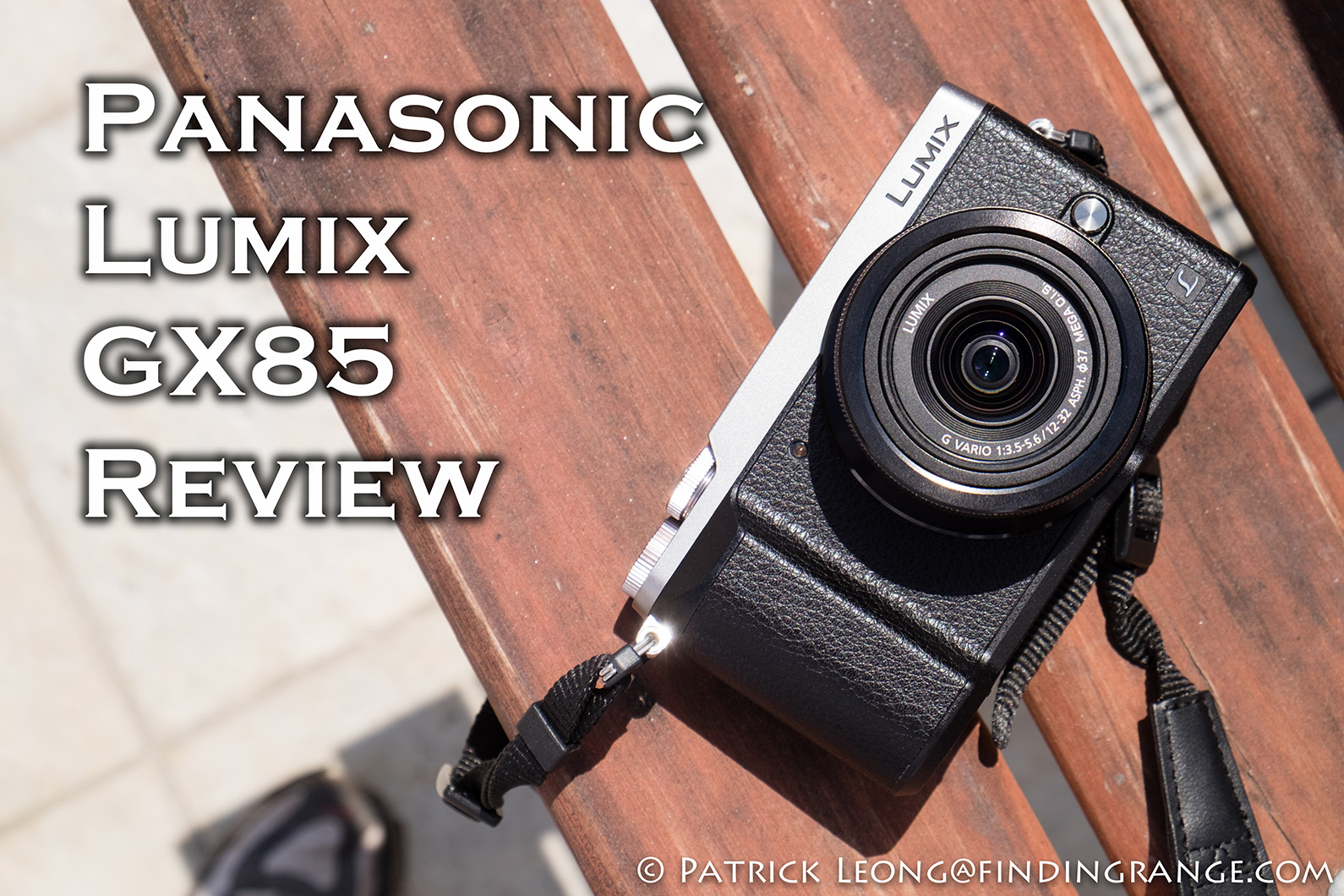
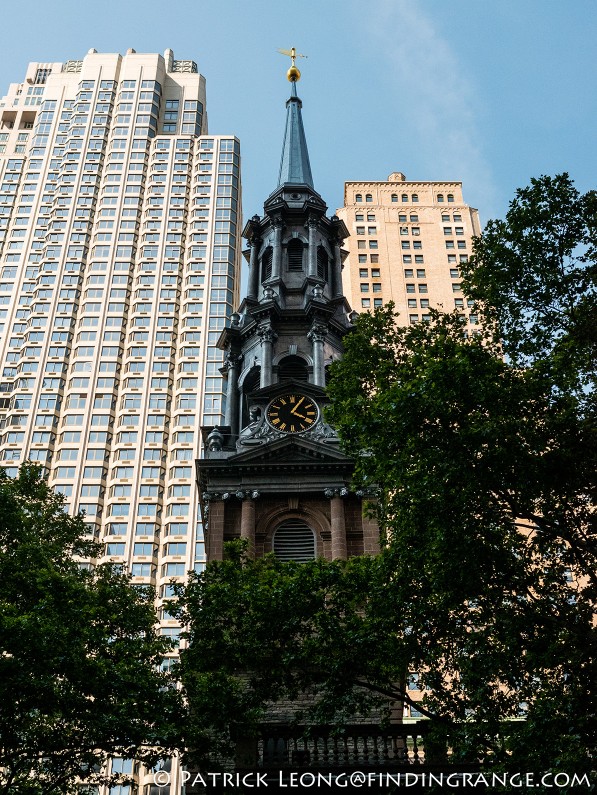

A well-written and useful review (as always).
Thanks inthedarkroom! Glad to see you back here!
I got a super deal on this camera with 2 kit lens for $650, and it takes wonderful photos, unless you don’t realize a button in the back was accidentally depressed. The camera is near perfect in every aspect aside of buttons being far too easy to press by accident. I may try the thumb rest which slots into the hot shoe, but really in the end only turning off the camera immediately after each shot, and hold it by the top and bottom, may be an only solution. The bottom right for changing the screen is a button often hit, but the real problems come when the Menu and say Light Balance or other settings get changed. I will try my best to find a solution, as this truly is a nice camera in every other way. Also the battery life is half that of my Nikon D5000. The Joby wrist strap seems to be working out OK. I have been trying out the iAuto and so far it is pretty impressive. Most photos have come out looking good and sharp. When in auto mode, do take notice of where it is choosing to focus on long shots however — it sometimes picks something up close and the rest is a blur. You really don’t have to manual focus – just half press a few times and see where the squares are indicating as focus point, then when it is correct – click and go.
Hi Lorenzo,
Wow, that is a great deal :)! Congratulations on your new camera system! It’s funny because a lot of cameras these days are so full of tech that they end up having so many buttons :). I’m currently reviewing the Panasonic Leica 8-18mm, and I’m using a Pen-F with it. I love the Pen-F but I keep hitting buttons on the back of the camera by accident :). The thumb rest might be a good idea. It’ll give you a place for your thumb to rest, and since it’s not a big accessory, it also won’t ruin the small dimensions of the GX85. If you end up getting one, please let me know what you think of it,
Best,
Patrick
They could solve the problem of buttons pressed in error, I would imagine, with a software fix where the Menu or any other button would have to be pressed twice to activate, or press an held for ten seconds before command changes. If the redo the camera, they should consider a special button to activate Menu Button after a press of the special button. I am afraid that the palm of the hand is changing setting, as much as, thumbs change of setting. If I get the thumb rest, I will report back to you. On the 15th I will meet with a gentleman using one on his Sony mirrorless camera. It is the longer rest than recommended than the one for a GX85, but some say this is a good thing. Those without large hands, or simply wanting the thumb closer to the right may want the longer one. I will measure to see if it interferes with any buttons. My guess is it may make a couple slightly harder to get to, but the dial should be OK.
I just got my Lowepro case from Adorama for $15 it is the Scout SH120 valued at $59. It works fine and there is no shipping cost within the USA. Another accessory which seems to work well is my new Joby wrist strap for mirrorless or any mid-sized camera. Those are $10 to $15. Adorama is $15 no ship charge. Next up will be the FotodioX Pro Thumb Grip
On Amazon they have the Fotodiox Pro Thumb Grip for Mirrorless Digital Cameras (Black), fits: Fujifilm X-Pro1 , then the Model A which is recommended – may be too short. On the B&H site they have the A and B model and some reviews there as well. Will see.
Hi Lorenzo,
Sorry for the late reply! I think there are just way to many buttons on some of these cameras these days haha. As I mentioned in my last comment to you, I’m currently using the Pen-F to review the Panasonic Leica 8-18mm, and I love the camera but there are times when I’m mashing on certain buttons accidentally. Definitely let me know how the thumb rest works out for you, if you end up purchasing it.
The thing is, the size of the GX85 is nice. Mine was a review sample, so I had to return it but I do remember it being a camera that I could bring anywhere with me, and even fit in a pocket if I wanted to. It’s not easy to find accessories to make the camera more comfortable and convenient because I imagine you’d want to keep the same overall size.
Best,
Patrick
Another more radical grip method is made of wood. But then again, may get bulky?
J.B. Camera Designs Pro Wood Grip for Panasonic GX85 GX80 – Handmade in the USA
sold on Amazon
Hi Lorenzo,
That grip looks like it might actually help, and the quality looks good but like you said, it would seems like it would make your camera bulky. If they have a decent return policy, it might be worth a try.
Best,
Patrick
Got the FotogdioX thumb grip NEX-B which is fairly long. My hands are not all that big, so I am thinking it should work out OK. If a person had larger hands, the recommended one for the Lumix DMC-GX85 is actually the A model and not the longer B. It fits in nice and snug – simple slide in to the hot shoe. It does not interfere with the pop-up flash. A shorter one would have centered the weight more, but it would also be more of a stretch and the hand would cover the screen more with the shorter one. So I think longer may be best. Only one button under the grip is slightly covered — everything should work fine. B&H and Amazon sell it for $15.
The thumb grip does seem to help as a point the place the thumb on so that the rest of the hand doesn’t touch those Menu Buttons. As for a grip, in my case, I would say that has no value. I will keep it on the camera as a point to place the thumb, even if simply lightly touching the grip tip, so that I am less prone to accidentally engage the Menu System. Today I shot 61 photos and did not get into too much trouble with the accidental presses, other than hitting the bottom right button once, sending it into a different Finder View — but this is OK, as you simply hit the same button until the proper view comes back. The other setting can do far more damage, such as the White Balance being accidentally changed. So I am happy to report, for at least a day, the grip held the palm of hand far enough away as to not do damage. So in sum, the grip is more a rest place to avoid presses, but is sometimes useful in cases where you turn the camera for verticals. Some may find it useful in holding on to the camera. I take the Joby wrist strap and spin a little twist to get it tighter as needed, with the loop fully closed on the arm. It works.
– Lorenzo
Hi Lorenzo,
Apologies for the late reply. Good to hear that for the most part, the grip works. I tried something similar on my Fuji X-Pro1 way back when I owned it.
Best,
Patrick
More problems today with focus and strange photos. While most look OK, some had a double image of people moving. I looked at photos taken last year with a similar shutter speed + ISO, and do not see any signs of ghost images. Something may be wrong.
Will try AFF for focusing, using Aperture Preferred. Set the focus to 49 point focus. I assumed that in iAuto+ mode it would set all this according to view / situation. The online manual is a little easier getting around than is the paper one — both don’t explain the strange things happening, but with experimenting around, I may zero in on what is happening. Never had a digital camera do such strange things. But then again, I have spent many more years with film cameras, which I loved. As for this camera, maybe it is different than using my Nikon DSLR, which seemed not too off from using a film camera. Oh well, live and learn.
Hi Lorenzo,
Did you figure out what went wrong?
Best,
Patrick
The last photos I took using AFF had no ghosts, but then again 20 to 30% were not perfect focus. I will shoot some more in iAuto+ but use selecting a focus point on some rather than letting the auto focus decide. I was reluctant to use the Menus much due to the accidental pressing when holding this camera setting things on its own. For pin pointing where to focus, I had tried the tap on monitor to select, which does work. I really prefer using the Viewer however, so will use the Menu with the half press of shutter button method.
When the focus is correct the results are great! This means the kit lenses are fine. Quirks are in the focusing process. When using the auto focus and not guiding the focus point, I will now shoot two or three times. Now the question is, will choosing a focus point make a difference. Like I said before, it is capable of great, sharp, and correct colored images. I just want to get it closer to 100%. There manual info is not all the great to sort through, and the menu of items, not the easiest to sort through, but all in all, not too bad, organizational wise. I will work at it.
Ghost birds in flight return! And the focus in automatic, not so good at a distance. I will now try to use spot focus, and just move the focus point as needed using the monitor. I tried the menu driven moving of focus point and it was too difficult to recall each hoop to jump through to get it to work. I ended up having the WB screen come on instead of moving the focus — Using the tap on monitor to adjust is less painful. Actually, just going back to my Nikon D5000 is more rewarding. Olympus makes a similar priced camera to this Lumix OMD Mark II or something like that. May have to see if Panasonic can fix my camera, or just eat it and get an Olympus, or go back to DSLR. So far I am not impressed with mirrorless. Sucks battery and will not always focus properly. Junk.
Hi Lorenzo,
Sorry to hear about your bad experience. Depending on when, and where you bought it, you may be able to exchange it. You can also send it back to Panasonic to have it checked out, since it’s new, and it should be covered under warranty. The Olympus OMD is a nice little cam as well. My brother in-law is a big fan of the system.
Best,
Patrick
Last shoot was successful. I used the aperture preferred method, and the monitor on the back to select which area to make as the focus point. It worked. Almost 100% in focus. While the iAuto+ may work at times, I am going to shoot mostly in modes with more control. – Lorenzo
Hi Lorenzo,
That is great news! So, I take it you’ll be keeping it?
Best,
Patrick
Sent you a link to shoot at The Village of Arroyo Grande. I think most images came out very sharp. Yes, will keep the camera. For now, using aperture preferred + using the monitor to move the focus point, when needed, with a simple tap on the spot, seems to yield the best and consistent shots taken. The kit lenses look sharp enough. I am not really all that fussy about the technical, just wanting good quality, and to capture a moment in time, in just the right way.
I like your sample photos as proof it is capable of taking good images, both in kit and prime lenses. I have seen another review and the sample did not look that good. Wonder if it was in the iAuto mode? Auto and Auto+ take a great shot, then blow it the next time. IMHO, it would be something to use only when you really do not have the time to change focus or aperture yourself, which takes all of a seconds to do. Never owned a mirroless camera before. Is there any consensus on who makes the best? Is it Fujifilm, Sony, Olympus, or Panasonic? I take is there are fans of the two different mounts / sensors, with the bargain being the micro four thirds.
I sent the link with a different email address — you can use that one or the one included here — same address actually.
Hi Lorenzo,
I usually manually adjust my cameras that I review. I also shoot in RAW, which helps out in the IQ department.
As for which mirrorless is the best, well…that’s a difficult question to answer. As with all cameras these days, I think personal preference is very important. It depends on what you like, what feels good in your hands, what lenses you like to use, etc. Yes, I do think each manufacturer has their own unique color rendering, etc., and some may be better in certain areas and vice versa but keep in mind that a lot of the stuff out there is pretty good overall.
I prefer the APS-C sensor over the M43 but it does not mean you can’t get great images out of an M43 sensor. My brother in-law has been a M43 shooter for years, and loves the system. He’s produced some fantastic images. There are a lot of benefits to micro four thirds. For one, the gear is usually very compact. The lens selection is also quite large. There are also some great optics. For instance, I own the XF 56mm APD for my Fuji but I actually prefer the Panasonic Leica 42.5mm Nocticron over it.
Best,
Patrick
Back to fuzzy photos today. Used the 45-150 lens at f5.6 and the focus was not great. I should have used f9 or 11, I guess. Anyway, at a long distance or shorter distance, i would not say the focus was sharp. I think I will go back and setup my old Tilt-All tripod and use the Nikon and Lumix with the same setting, and subject to see how the shots compare. Those done with the short kit the other day looked sharp — not sure now what is up with these. I may have to contact Panasonic about a return of the camera. Just want to test it one more time. I sent in my 3 yr warranty info some time ago, and should be hearing of a confirmation, I would think. They should have me in the system by now.
Hi Lorenzo,
If you still like the camera, before you ask them for a return, ask them to take a look at it to see if there is anything wrong with it. It may just need an adjustment. It could just be that particular lens too. Even if they don’t have you in the system yet, I’m almost sure they will help you out.
Best,
Patrick
You never know, I may be the one needing adjustment. The manual for this camera is confusing at best, so I end up experimenting with different settings on my own. I am getting the feel of where the camera will not focus, being more careful to set the focus area and aperture, so I am getting fewer errors. Once zeroed in, the detail is great – colors are fine. As for automatic mode for focus, I will try that again some day, but the current testing is all aperture preferred and focus area I am setting. I hope to get things sorted out, and use the camera instead of sending it back. I think the micro four thirds lenses are and sensor work well — may go with the Olympus next time, in say three or four years. But then again, by then I may grow to like this camera. It works well in the city – closer up images, which is what I am looking to do more of. Over the years of vacations and landscape photos, it is time to do more artsy stuff. I can whip-out the iPhone or the little mini pocket camera for those large scenes.
In APS-C cameras, who makes the better cameras in the $700 to $1,300 range, Sony or Fujifilm?
Hi Lorenzo,
Yeah, using it for a little bit longer, isn’t a bad idea. You have time anyway, since you have a 3 year warranty, if repair is needed.
As for the APS-C cameras, I prefer the Fuji offerings. As to which is better, again, that’s really up to the user. In that price range, both manufacturers have excellent offerings. But for myself, I prefer the ergonomics of the Fuji. I also like the lenses, and I’m really happy with what comes out of the camera. That’s why in the APS-C category, I am a Fuji user. In that price range, I really like the X-T20, which I reviewed a while ago. The upcoming X-E3 might be promising too.
Best,
Patrick
Now I am embarrassed. After doing a reset to factory of settings, my DMC-GX85 appears to be focusing properly. I do believe I made a rookie error in settings, then compounded it by another setting which did on work well. Too embarrassed to go into details. Will go out and take more photos to see if all is working now. After considering all complex combos of setting, you realize how stupid you were not to see it was a basic setting — oh, my I may be over the hill and down the other side 😐
I will say that the buttons on the back are too easy to hit by accident. The thumb-rest helps a bit, as you are less likely to wander into the wrong areas and engage something.
Hi Lorenzo,
Don’t worry, no need to feel embarrassed! It seriously happens to all of us at times. Cameras are so complicated (unnecessarily complicated sometimes, if you ask me) these days. Honestly, I don’t even use half the features in my cameras :). I like to keep it simple, and usually that works out better for me. So, don’t be so hard on yourself :)!
I hope the camera finally works out the way that you want it to! Keep me updated, and thanks for stopping by!
Best,
Patrick